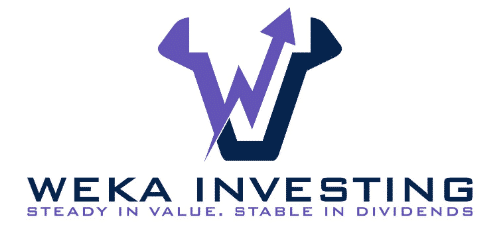The Essential Guide to Long-Term Investment Criteria: 5 Unstoppable Growth Criteria to Unleash Financial Success!
In the vast ocean of financial strategies, there lies a concept that consistently resurfaces, no matter the economic climate—long-term investment criteria. As we sail through financial storms and bask in economic sunshine, this key phrase offers a compass for those seeking sustainable returns on their investments. But it’s not just a buzzword. It’s a foundation.
Have you ever wondered why certain investments thrive when others falter? Why, amidst economic downturns, certain stocks remain resilient, while others tumble? The answer often lies in the commitment to, and understanding of, long-term investment criteria.
Beyond the daily buzz of stock prices and the adrenaline of day trading, there’s a world of investors who understand that real wealth is built over time. They don’t chase the latest fads but rely on a set of time-tested criteria to guide their decisions, ensuring not just temporary gains, but lasting financial security. If you’re looking for a blueprint to navigate the unpredictable seas of the investment world and find the treasures of consistent returns, you’re in the right place.
The Stability and Soundness of the Company
In the realm of investments, one phrase consistently echoes as a guiding light: “long-term investment criteria.” Within this spectrum, perhaps the most foundational aspect is discerning the inherent stability and soundness of a potential investment, particularly a company.
Every seasoned investor knows that the whims of the market can be erratic, often swaying with global news, economic policies, and industry disruptions. Yet, those companies that truly stand the test of time, enduring through market volatilities and emerging even stronger, invariably align with long-term investment criteria. But what makes a company fundamentally stable and sound?
First and foremost, a company that meets long-term investment criteria will often have a track record of consistent performance. It’s not just about having a good year or two but showcasing resilience and adaptability over decades. Think of this as the company’s autobiography, where each chapter tells a story of overcoming challenges, adapting to changes, and consistently delivering value to its stakeholders.
Additionally, the business model plays a pivotal role. A fundamentally sound company, in line with long-term investment criteria, operates on a model that’s both scalable and sustainable. It’s not easily disrupted by external factors and has inherent mechanisms to adapt and grow. For instance, companies with significant market footprints, like major conglomerates or those dominating a niche market, often demonstrate these traits.
It’s worth noting that real-world examples can often shed light on this aspect of long-term investment criteria. Consider companies that have not just survived but thrived in turbulent times, expanding their operations and customer base. Their resilience often stems from their unwavering focus on core principles, innovation, and a deep understanding of their market dynamics.
In essence, when evaluating potential investments based on long-term investment criteria, the stability and soundness of a company form the bedrock. It’s this robust foundation that ensures not just short-term gains but a legacy of growth, prosperity, and lasting shareholder value.
The Quality of the Management Team as a Long-term Investment Criteria
In the vast landscape of investment decision-making, a predominant factor that aligns with the principles of long-term investment criteria is the quality of a company’s management team. It’s a pillar that, while not tangible like assets or immediate gains, has profound implications on the trajectory of the company.
Every investor, whether novice or seasoned, should recognize that companies aren’t faceless entities operating on autopilot. They’re driven by teams, particularly leadership teams, whose decisions, vision, and operational prowess can steer a company towards enduring success or abrupt failure. As such, understanding the management’s effectiveness and reliability is a cornerstone of long-term investment criteria.
So, how does one assess the quality of management?
The primary criterion revolves around track records. Much like evaluating the company’s performance over time, a good look at the past achievements, decisions, and strategies of the leadership can offer a glimpse into their competency. Have they steered previous organizations to success? Do their decisions align with the company’s broader goals and the interests of stakeholders? Answering these questions can provide valuable insights into their ability to guide the company towards fulfilling long-term investment criteria.
However, it’s crucial to strike a balance. Investors shouldn’t get caught in the extremes. While every stakeholder would desire a management team that’s continuously outperforming and achieving remarkable feats, it’s essential to understand that not every decision will yield immediate results or be free of setbacks. The key is consistency. The ideal management, in line with long-term investment criteria, showcases consistent performance over time, rather than sporadic bursts of genius.
On the flip side, investors should be wary of consistently poor decisions or strategies that show a blatant disregard for stakeholder interests or the company’s future. Tolerating subpar management can be a significant detriment to achieving the benchmarks set by long-term investment criteria.
In the grand tapestry of investments, the management team’s quality acts as the weaver. Their actions, decisions, and leadership styles directly impact the company’s health, direction, and potential for growth. Their alignment with long-term investment criteria ensures not just momentary spikes of success but a sustainable trajectory of growth and value creation.
Long-term Competitive Advantages
Amid the complex jigsaw puzzle of investment decision-making, one piece that undeniably aligns with long-term investment criteria is the presence of long-term competitive advantages within a company. These advantages are the barriers, the moats, that shield a business from competition, giving it a distinct edge and ensuring its sustainability over extended periods.
For any investor dedicated to fulfilling long-term investment criteria, understanding these competitive advantages isn’t just optional—it’s imperative. They represent the company’s unique value proposition that competitors can’t easily replicate or overcome.
So, what encapsulates a long-term competitive advantage?
First, there are the tangible assets: proprietary technologies, exclusive patents, and vast capital investments that others cannot easily mimic. Consider a tech firm with a unique algorithm that drives efficiency, or a pharmaceutical company with an exclusive patent on a breakthrough drug. These advantages, tangible and concrete, offer the company a significant headstart and align perfectly with long-term investment criteria.
Yet, there are also intangible assets, often more profound. Brand reputation, company culture, and customer loyalty are some examples. These aren’t assets you can put a definitive price on, but their value, in line with long-term investment criteria, is undeniable. Think of established brands that customers gravitate towards because of trust, or companies whose culture of innovation consistently keeps them ahead of the curve.
Furthermore, the market environment itself can be an advantage. Companies operating in oligopolistic markets, where only a few key players dominate, often benefit from reduced competition. This environment often results in stable revenue streams and robust growth potential, key pillars of long-term investment criteria.
However, identifying these advantages requires discernment. Not every unique aspect of a company translates to a genuine long-term competitive advantage. The real measure lies in its ability to consistently generate value, resist competitive pressures, and adapt to the evolving market landscape, all of which reinforce its alignment with long-term investment criteria.
In conclusion, a company’s long-term competitive advantages serve as its compass, guiding it through turbulent market waters and ensuring its course remains steadfast towards fulfilling long-term investment criteria. These advantages, both tangible and intangible, are the pillars that support sustained growth and consistent value generation.
Dividend Payments and Buybacks
In the intricate web of factors that define a company’s attractiveness from an investment perspective, dividend payments and buybacks stand out as crucial indicators, especially when viewed through the lens of long-term investment criteria. These financial actions don’t merely represent a company’s current financial health but serve as a testament to its stability, commitment to shareholders, and confidence in its future.
Dividends, at their core, represent a company’s willingness and ability to share its profits with its shareholders. For an investor seeking to align with long-term investment criteria, consistent dividend payments—and more importantly, growing dividends—can serve as a beacon. They indicate not just the company’s current profitability but its confidence in future earnings. In an uncertain market, a company that continues to reward its shareholders with dividends is, more often than not, a company that believes in its roadmap ahead.
Yet, dividends are just one side of the coin. Buybacks or share repurchases play an equally pivotal role in realizing long-term investment criteria. When a company buys back its shares, it’s making a statement: it believes its shares are undervalued and that investing in itself is a good decision. Buybacks can enhance shareholder value by increasing earnings per share, offering a strong sign that the company aligns with long-term investment criteria.
But there’s a nuance to understanding dividends and buybacks in the broader scope of long-term investment criteria. It’s not just about the action but the reasoning behind it. A company should have a stable financial footing to support these decisions. Ideally, dividends should not drain a company’s reserves or jeopardize its future growth potential. Similarly, buybacks should stem from a genuine belief in the company’s undervaluation and not just a tactic to artificially inflate share prices.
It’s also paramount for an investor to ensure that the dividends are well-covered. In the pursuit of long-term investment criteria, one must look for companies that have a substantial buffer. This ensures that even in times of financial strain or unexpected market downturns, the company can maintain its dividend commitments without stretching its resources too thin.
To encapsulate, dividend payments and buybacks aren’t just reflections of a company’s present-day status. They are foresights into its future, providing crucial insights for those dedicated to fulfilling long-term investment criteria. A company that consistently rewards its shareholders and invests in its growth is one that sees a bright, enduring horizon ahead.
Upside Potential and Analyst Expectations
In the vast realm of investment decision-making, the analysts’ expectations and forecasted growth and the broader upside potential of a company can be the shining stars guiding an investor’s path. Yet, when judged against the yardstick of long-term investment criteria, these factors become even more pivotal. They don’t merely reflect optimistic projections but weave a narrative about a company’s future and its capacity to deliver sustained value over time.
For anyone who aligns their strategies with long-term investment criteria, the upside potential of an investment can’t be overlooked. It signifies more than just the possibility of a stock price appreciation. It encompasses the company’s capacity to innovate, adapt, expand, and thrive in a competitive landscape. The potential to grow, to scale, and to capture larger market segments is a testament to a company’s vision and its resilience against market headwinds.
Yet, while an investor might possess intuition and belief, relying solely on gut feeling doesn’t align with robust long-term investment criteria. Here’s where analyst expectations come into play. These experts, armed with in-depth research, industry knowledge, and analytical tools, shed light on a company’s trajectory. Their forecasts on earnings growth, sales trends, capital expenditures, and even potential market challenges provide a more structured lens through which to view a company’s future.
But it’s essential to remember that while analysts offer valuable insights, they too come with biases. Hence, for those dedicated to upholding long-term investment criteria, it’s crucial to strike a balance. Use analysts’ forecasts as a foundation, but build upon it with personal research, understanding of macroeconomic factors, and knowledge of industry dynamics.
Moreover, tools and platforms that assess analyst accuracy can be indispensable for someone dedicated to long-term investment criteria. These tools, by offering a scorecard on predictions, enable investors to gauge the reliability of the projections and refine their investment strategies accordingly.
To wrap it up, while the allure of upside potential is undeniable, grounding one’s investment decisions in thorough research and expert insights solidifies the alignment with long-term investment criteria. It’s not just about predicting the future, but about ensuring the chosen path is built on a foundation of knowledge, insight, and strategic foresight.
Valuation: Navigating the Compass of Investment Decisions
Valuation is often likened to the North Star of investment decisions, guiding investors through the vast expanse of the financial universe. When aligned with long-term investment criteria, understanding valuation becomes even more critical. Various methods, ranging from analysts’ targets to intrinsic value estimations, offer diverse perspectives on a company’s worth. Let’s unravel these methods to arm ourselves with a robust valuation toolkit.
Analysts’ Targets and Estimates
Analysts delve deep into the financial health, market positioning, and potential growth trajectories of companies. Their targets and estimates are a culmination of this research, providing a projected value or price for a stock. For investors adhering to long-term investment criteria, these projections offer valuable insights into the future performance of a company. However, it’s essential to approach these targets with a discerning eye. Understand the rationale behind the projections, the assumptions made, and the potential biases at play.
Discounted Cash Flow (DCF) Analysis
The DCF method estimates the value of an investment based on its expected future cash flows. By discounting these cash flows back to their present value, it offers an intrinsic value for the stock, which can then be compared to its current market price. For those guided by long-term investment criteria, DCF provides a perspective based on a company’s fundamental earning potential. While powerful, this method requires careful consideration of assumptions such as future growth rates and discount rates. Moreover, DCF can be sensitive to these inputs, and slight variations can lead to vastly different valuations.
P/E Comparisons
Price-to-Earnings (P/E) ratio is a popular tool in the valuation arsenal. It compares a company’s current market price to its earnings per share. When used alongside long-term investment criteria, P/E ratios can highlight how the market values every dollar of a company’s earnings. Comparing a company’s P/E to its peers or the broader market can offer insights into its relative valuation. However, it’s important to consider the nuances. For instance, a high P/E might indicate overvaluation or might be reflective of high growth expectations. Conversely, a low P/E might be a sign of undervaluation or underlying issues in the company.
In essence, valuation, when intertwined with long-term investment criteria, becomes a powerful compass for investors. Each method offers a unique lens through which to view a company’s value. While no single approach is infallible, combining multiple perspectives and ensuring alignment with long-term objectives can pave the way for informed and strategic investment decisions.
Additional Considerations
While the core elements of choosing a robust investment are essential, diving deeper into additional considerations ensures that an investor’s strategy is truly aligned with long-term investment criteria. These facets, while sometimes overlooked, can play a pivotal role in refining an investment decision, ensuring it’s both sound and future-proof.
The Importance of a Safe Dividend
Dividends can be a delightful reward for shareholders, but for those genuinely committed to long-term investment criteria, the safety of these dividends is paramount. This is where understanding the dividend payout ratio becomes crucial. This ratio, which compares the dividends paid out to a company’s net income, can provide clear insights into the sustainability of these payments. A lower payout ratio indicates that a company retains more of its earnings, suggesting that dividends are well-covered and have room for potential growth. For investors seeking alignment with long-term investment criteria, ensuring that a company’s dividend isn’t just attractive but also sustainable can be a deciding factor in its long-term attractiveness.
Upside Potential: A Deeper Dive
While we’ve touched on upside potential before, it’s worth reiterating its significance, especially when viewed through the lens of long-term investment criteria. Management guidance and analyst predictions can provide a roadmap of a company’s projected growth. Management, with its intimate knowledge of company operations and strategies, offers a unique perspective on where the company sees itself in the coming years. Meanwhile, analysts, with their industry insights and broader market understanding, can corroborate or challenge these projections. For an investor, this dual perspective can be invaluable, offering a balanced view of a company’s growth potential, ensuring that their choices resonate with long-term investment criteria.
Addressing the Analyst Conundrum
Relying on analysts can sometimes be a double-edged sword. While they offer a wealth of information and insights, criticisms and concerns regarding their objectivity and biases are valid. It’s essential for those committed to long-term investment criteria to approach analyst predictions with a discerning eye. Understand their perspectives, but also recognize their potential limitations. Analysts can be influenced by various factors, from institutional pressures to market sentiments. Thus, while their insights can be invaluable, they should form a part of the decision-making process, not dominate it. By balancing personal research with analyst predictions, investors can ensure that their strategies genuinely echo long-term investment criteria.
Q: What is long-term investment?
A: Long-term investment refers to investing in assets or securities with the intention of holding them for an extended period, typically more than a year. The goal of long-term investment is to generate higher returns over time, taking advantage of the compounding effect.
Q: Why should I consider long-term investment?
A: Long-term investment is ideal for individuals who want to build wealth over time and secure their financial future. It allows you to potentially benefit from the power of compounding, ride out temporary market fluctuations, and minimize transaction costs.
Q: What criteria should I consider when making a long-term investment?
A: When evaluating long-term investment opportunities, it is important to consider factors such as the company’s fundamentals, cash flow, valuation, and long-term growth potential. It is also crucial to diversify your investment portfolio to spread the risk.
Q: How do I determine the time horizon for long-term investment?
A: The time horizon for long-term investment depends on your financial goals. It can vary from several years to decades. Consider factors such as your investment objectives, risk tolerance, and when you may need the funds to determine your specific time horizon.
Q: What are the benefits of long-term investing?
A: Long-term investing offers several benefits, including the potential for higher investment returns, the ability to take advantage of compounding, and the opportunity to hold investments through temporary market fluctuations. It also allows for more strategic and gradual allocation of assets.
Q: How does diversification play a role in long-term investment?
A: Diversification is a crucial aspect of long-term investment. By spreading your investments across different asset classes, industries, and geographical regions, you can reduce the risk of significant losses and increase the potential for consistent returns.
Q: What risks should I be aware of when engaging in long-term investments?
A: Long-term investments carry various risks, including fluctuations in market value, changes in economic conditions, and potential downturns in specific industries or sectors. It is important to carefully assess the risks before making any investment decisions.
Q: Should I rely on market timing for my long-term investment strategy?
A: Market timing, or attempting to buy and sell investments based on short-term market fluctuations, is generally not recommended for long-term investors. Trying to time the market can be difficult, and it may result in missed opportunities and higher transaction costs.
Q: How can I evaluate the performance of my long-term investments?
A: To evaluate the performance of your long-term investments, you can track various metrics such as investment returns, portfolio growth, and the achievement of your financial goals. It is important to regularly review and adjust your investment strategy as needed.
Q: Should I seek professional investment advice for long-term investing?
A: Seeking professional investment advice can be beneficial, especially for individuals who are new to long-term investing or lack the necessary knowledge and expertise. An unbiased financial advisor can help you create a suitable investment plan and provide guidance based on your specific needs and goals.
Conclusion
As we journey through the intricate maze of investment choices, strategies, and decisions, one beacon that consistently illuminates the path of astute investors is the understanding and adherence to long-term investment criteria. This expedition has underscored the pivotal role these criteria play in ensuring not just immediate rewards but sustained value and growth over extended periods.
The essence of long-term investment criteria isn’t merely about checking boxes on a list. It’s about cultivating a mindset, a philosophy if you will, that prioritizes stability, foresight, and sustainability. While the allure of quick gains can be enticing, those genuinely committed to the long game recognize that it’s the compound effect of informed choices, made consistently over time, that yields the most fruitful results.
However, as emphasized throughout, while expert opinions, management guidance, and analyst predictions offer invaluable insights, they are but tools in an investor’s toolbox. They should complement, not replace, individual due diligence. The commitment to long-term investment criteria means recognizing the interplay of expert insights and personal research, allowing each to inform and refine the other.
And so, as we conclude this exploration, let’s not just see it as an end, but rather a beginning – the start of a journey toward smart, informed, and long-term investing. A journey where the principles of long-term investment criteria act as our compass, guiding us towards choices that promise not just immediate satisfaction but a legacy of sustained growth and value.

Dr. Lincoln C. Wood teaches at the University of Otago in New Zealand. He is an avid investor and educator. He loves cash flow, income, and dividends when investing. He likes to buy undervalued companies with strong advantages and earnings growth.






